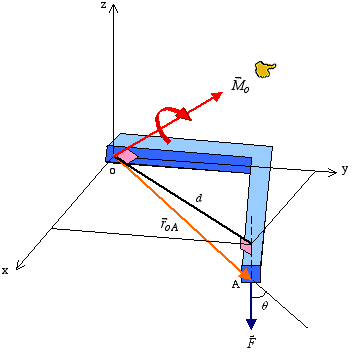What Is Torque?
Torque is the measure of the force that can cause an object to rotate about an axis. Force is what causes an object to accelerate in linear kinematics. Similarly, torque is what causes an angular acceleration. Hence, torque can be defined as the rotational equivalent of linear force.
Types of Torque
Torque can be either static or dynamic. Static torque is a torque that does not produce an angular acceleration. A few examples of static torque are as follows:
• A person pushing a closed-door is applying a static torque because the door isn’t rotating despite the force applied.
• Pedalling a cycle at a constant speed is also an example of static torque as there is no acceleration.
The drive shaft in a racing car accelerating from the start line exhibits dynamic torque because it must be producing an angular acceleration of the wheels, given that the car is accelerating along the track.
T The moment of a force about an arbitrary moment center "O" can also be described by the vector equation
 |
 to
to  with the thumb pointing in the direction of the moment vector. The axis of the moment vector
with the thumb pointing in the direction of the moment vector. The axis of the moment vector  and
and  . The magnitude of moment is measured in units of force times length (e.g., lb·in or N·m).
. The magnitude of moment is measured in units of force times length (e.g., lb·in or N·m).




No comments:
Post a Comment